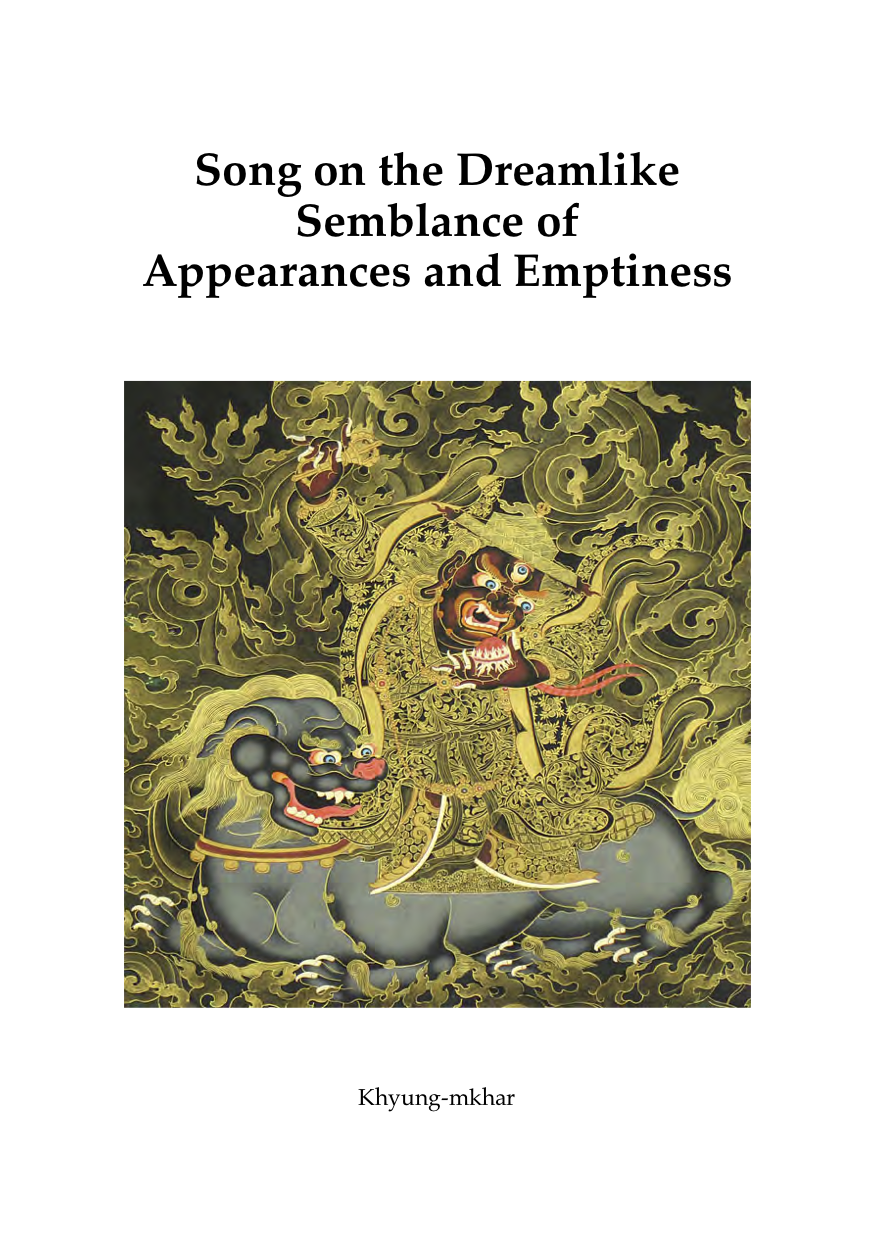Düdjom Rinpoche — The Practice of the Three Skies — Volume II, translated from the Tibetan and commented by Jean-Luc Achard. Translated from the French by Marianne Ginalski, Editions Khyung-Lung, 2024, 114 pages.
The volume 2 of the practice of the Three Skies by Düdjom Rinpoche is finally out!
The text translated and commented in this volume describes the main principles of this most iconic yoga according to the synthesis drawn by Düdjom Rinpoche (1904-1987) based on the teachings of his masters.
===========
Table of Contents
===========
Introduction 13
1. The source of the text 14
2. The principles of the practice of the Three Skies 16
3. The characteristics of the place 22
Utterly Profound and Ultimate Instructions on the Three Skies
— Precepts of the Secret Cycle of the Great Perfection 25
1. The identification of the Three Skies 25
1-1. The Outer Sky 25
1-2. The Inner Sky 25
1-3. The Secret Sky 25
2. The manner of practicing 26
3. The progress in practice 26
4. Characteristics of Equipoise and Post-Obtainment 27
5. Direct Introduction to the nature of the Path 28
6. Dispelling obstacles 29
The Mirror of the Diamond Sky — Abridged Commentary of
the Utterly Secret Instructions on the Three Skies 33
The Contemplative Ornaments of the Lord of Mysteries —
Detailed Commentary on the Secret Instructions of the
Practice of the Three Skies 45
1. The identification of the Three Skies 46
1-1. The Outer Sky 46
1-2. The Inner Sky 46
1-3. The Secret Sky 47
2. The manner of practicing 49
2-1. Guru-Yoga 49
2-2. The purification of stale air 49
2-3. The key point of the body 50
2-4. The key point of the doors 50
2-5. The key point of the mind 51
2-6. The absence of artifice 51
2-7. The three Natural Accesses 52
2-7-1. The Natural Access to the Mountain 52
2-7-2. The Natural Access to the Ocean 54
2-7-3. The Natural Access to Awareness 55
2-7-4. The combination of the three Natural Accesses 56
2-8. The Supreme Meditation 56
3. The progress in practice 57
3-1. the Yoga of Day and Night 58
3-2. The special methods 58
3-3. Integrating the Conduct 60
3-4. Remaining in the state of the mirror 61
4. Characteristics of Equipoise and Post-Obtainment 61
4-1. The definition of Equipoise 61
4-2. The definition of Post-Obtainment 62
4-3. The paradigm of deviation 63
4-4. The emergence and liberation of thoughts 63
4-5. The seal of compassion 65
4-6. The practice of the Horizon of Day and Night 66
5. Direct Introduction to the nature of the Path 67
5-1. The definition of Meditation 67
5-2. The experience of calm 68
5-3. The experience of movement 70
5-4. The experience of equality 70
5-5. The experience of Spontaneity 72
6. Dispelling obstacles 74
6-1. The lack of training 74
6-2. Discursive streams 75
6-3. The key point of corrections 76
6-4. The absence of attachment 78
6-5. The devotion for the master 79
6-6. The cultivation of altruism 81
6-7. Respecting the seal of secrecy 82
7. Colophon 84
Notes on the Utterly Secret Oral Transmission of the Practice
of the Three Skies according to the tradition of Rigdzin
Tsewang Norbu 87
1. The identification of the Three Skies 88
2. The manner of practicing 88
2-1. The key point of the body 89
2-2. The key point of breathing 89
2-3. The key point of the doors 89
2-4. The key point of the mind 89
3. The progress in practice 90
4. Characteristics of Equipoise and Post-Obtainment 91
5. Introduction to the methods of the Path 92
6. The dispelling of obstacles 96
Appendix — The Utterly Secret Yoga of Darkness 101
1. The preliminaries 101
2. The main Practice 102
2-1. The Pressure of the Ocean 102
2-2. The Entrance into the radiance of the Ocean 102
Bibliography 105
Publication hors-commerce à commander directement auprès de l'auteur ou bien en se connectant sur le Forum Dzogchen à l'adresse suivante:
https://forumdzogchen.forumactif.com/t988-dudjom-rinpoche-the-practice-of-the-three-skies-volume-ii







